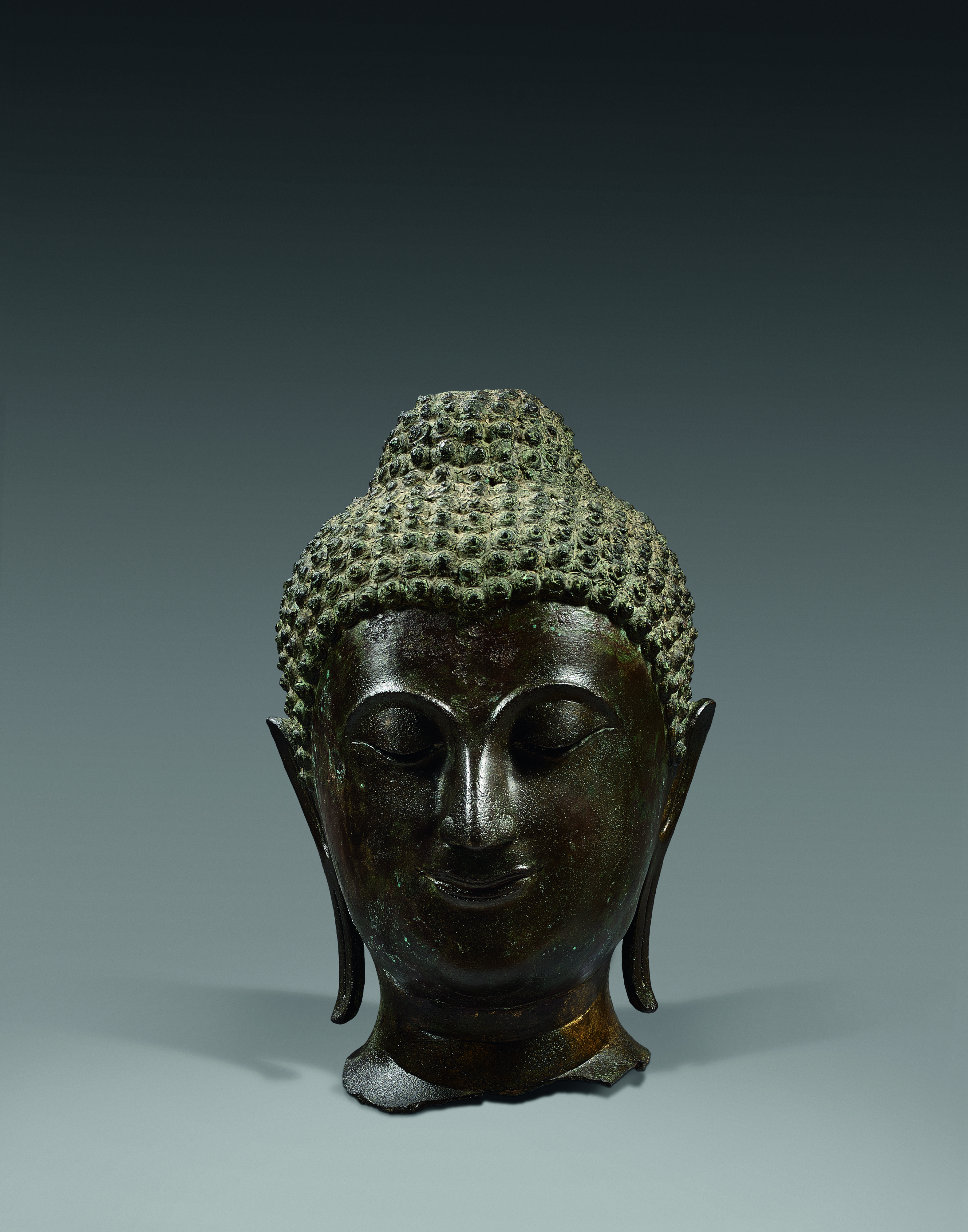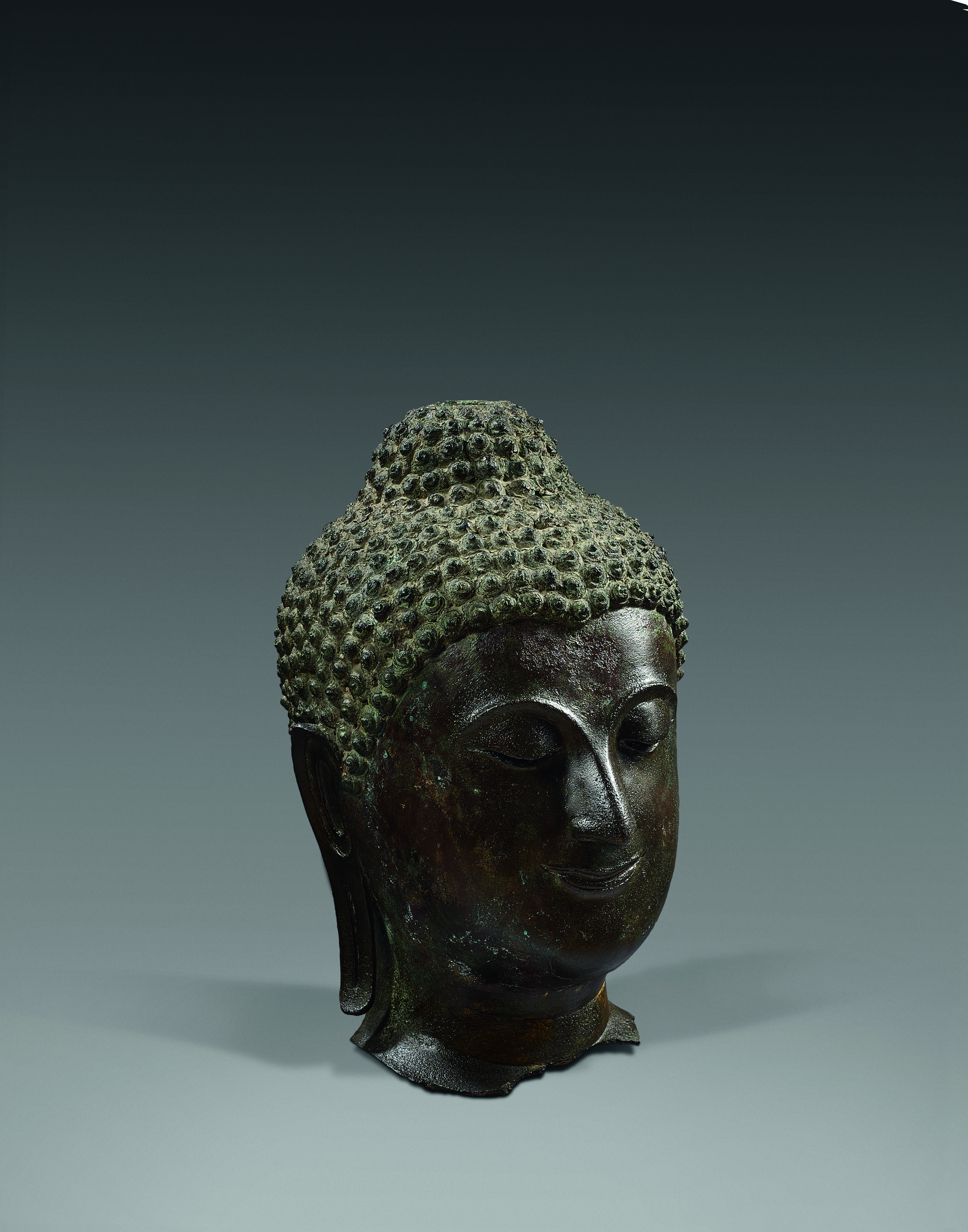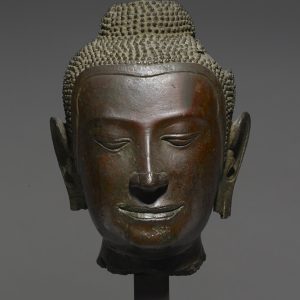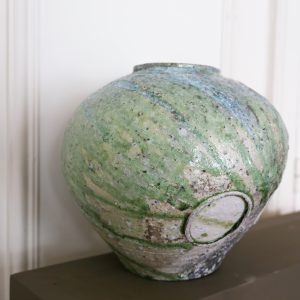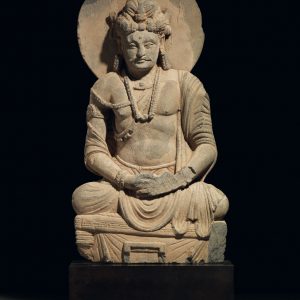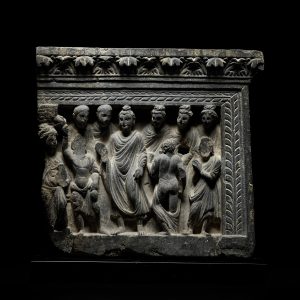Buddha Head
Bronze
Thailand
15th century. Kingdom of Chiang Sen (14th-15th century).
H. 41; ou 16 ¼ in
Description
In northern Thailand, the city of Chiang Sen, founded in 1327, was the capital of the small vassal Lanna Kingdom with which it shared a varied history. The city was an active centre for bronze-casters who had their own characteristic style. It is thought that Sukhothai casters came north and helped create this particular aesthetic style. That is why it has certain traits of the Sukhothai style, such as the hooked nose, dimpled cheeks, eyebrows arching to the bridge of the nose, and hair with tiny juxtaposed curls. But when all this is put together, the effect is different, less decorative, closer to the spirit of classic Indian Buddhist statues, more vigorous, imposing and majestic.
While the face is more radiant than Sukhothai art dictates, it is more refined than that of many creations from the north, such as Phra Singh-type Buddhas (Stratton, 2004, p. XXXVIII, No. C. 23).
This head is similar to one in the Griswold Collection (Woodward, 1997, p. 211, 217, No. 75).
Works mentioned:
- Stratton, Carol, Buddhist Sculpture of Northern Thailand. Chiang Mai : Silkworm Books, 2004
- Woodward, Hiram W., The Sacred Sculpture of Thailand. The Alexander B. Griswold Collection. The Walters Art Gallery. Bangkok : River Book, 1997 (rééd. 1999).
Provenance:
- Galerie William Wolf, New York, 1974

